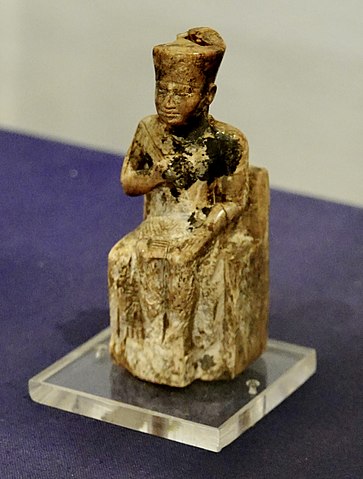Exploring the Legacy of Khufu: Egypt’s Most Famous Pharaoh
1. Building the Great Pyramid of Giza:
- Architectural Marvel: Khufu, also known as Cheops, is best known for commissioning the construction of the Great Pyramid of Giza, one of the Seven Wonders of the Ancient World. The pyramid stands as a testament to ancient Egyptian engineering and architectural prowess.

2. Pyramid Complex at Giza:
- Monumental Undertaking: In addition to the Great Pyramid, Khufu built a complex that included smaller pyramids for family members, temples, and other structures. The entire complex reflects the grandeur of Old Kingdom Egyptian royal burials.
3. Economic Impact and Labor Force:
- Resource Allocation: The construction of the Great Pyramid required vast resources, including limestone, granite, and a skilled labor force. The project’s scale had a significant economic impact on ancient Egypt.
4. Historical Records:
- Limited Documentation: Historical records from Khufu’s reign are relatively scarce, and much of what is known comes from later accounts, including writings by Herodotus and the Turin King List.
5. Ship Burial at Giza:
- Funerary Practices: A full-size ship was buried near the Great Pyramid, possibly intended for Khufu’s use in the afterlife. The well-preserved Khufu Ship provides insights into ancient Egyptian maritime technology.
6. Sphinx and Temples:
- Construction Beyond Pyramids: Khufu’s reign saw the construction of the Sphinx and associated temples on the Giza Plateau. The Sphinx is believed to represent the king, although its exact purpose remains a subject of debate.
7. Military Campaigns:
- Limited Information: While some inscriptions suggest military campaigns during Khufu’s reign, the details are scant, and the extent of his military activities remains uncertain.
8. Administrative Achievements:
- Effective Rule: Khufu is believed to have maintained effective administrative control over the Egyptian state during his reign. His ability to organize and oversee large-scale construction projects suggests a centralized and well-managed government.
9. Funerary Practices and Afterlife Beliefs:
- Pyramid as a Symbol: The construction of the Great Pyramid aligns with ancient Egyptian beliefs about the afterlife and the king’s journey to join the gods. The pyramid was a symbol of the king’s eternal ascendancy.
Khufu’s legacy is deeply tied to the monumental structures he commissioned, particularly the Great Pyramid of Giza. While much about his reign remains shrouded in mystery, the enduring impact of his architectural achievements continues to be a subject of fascination and study.











